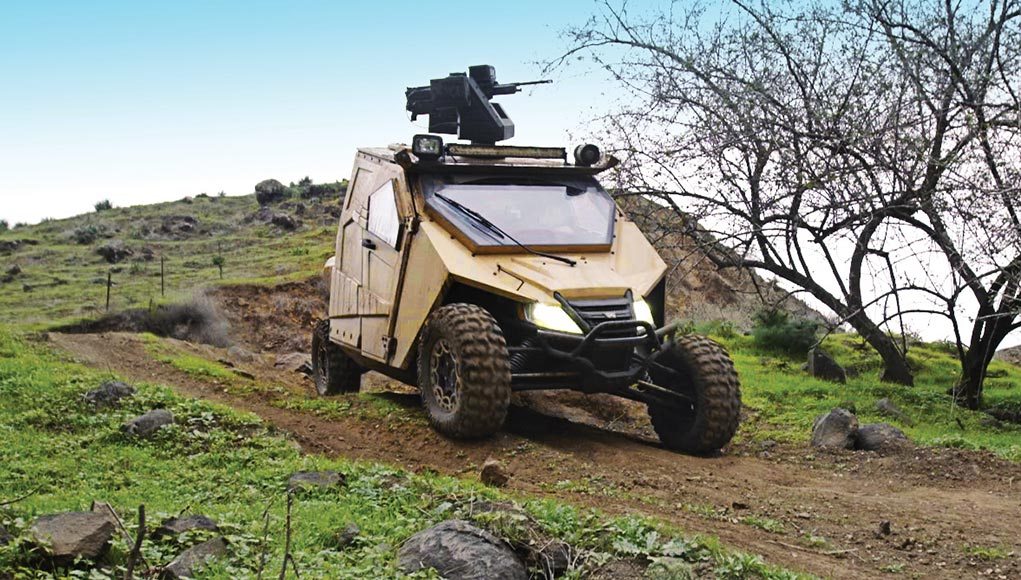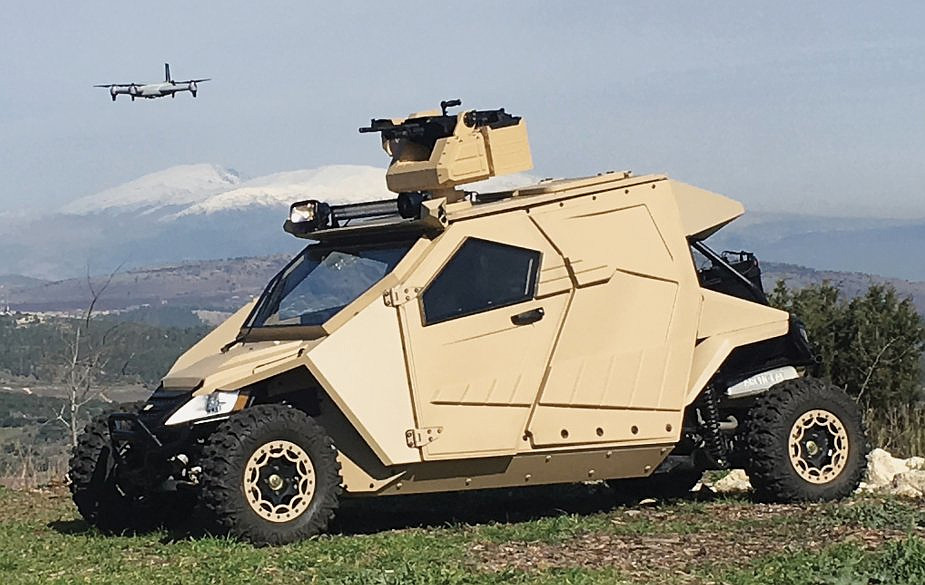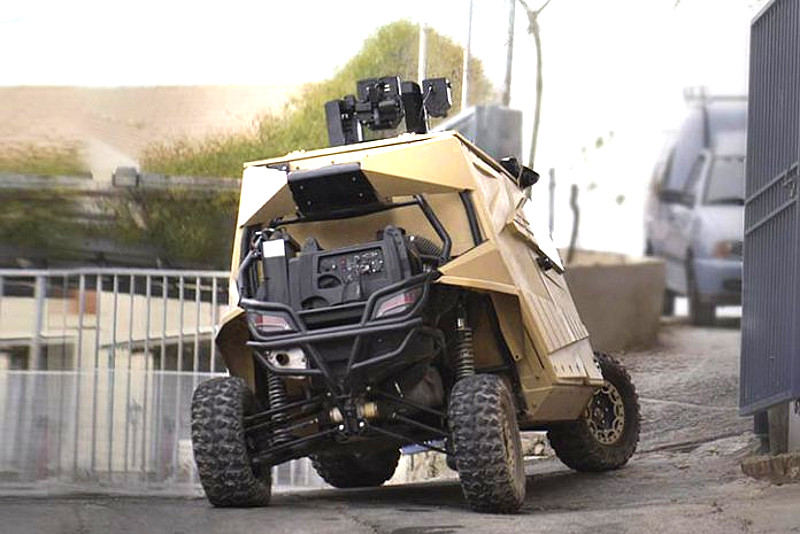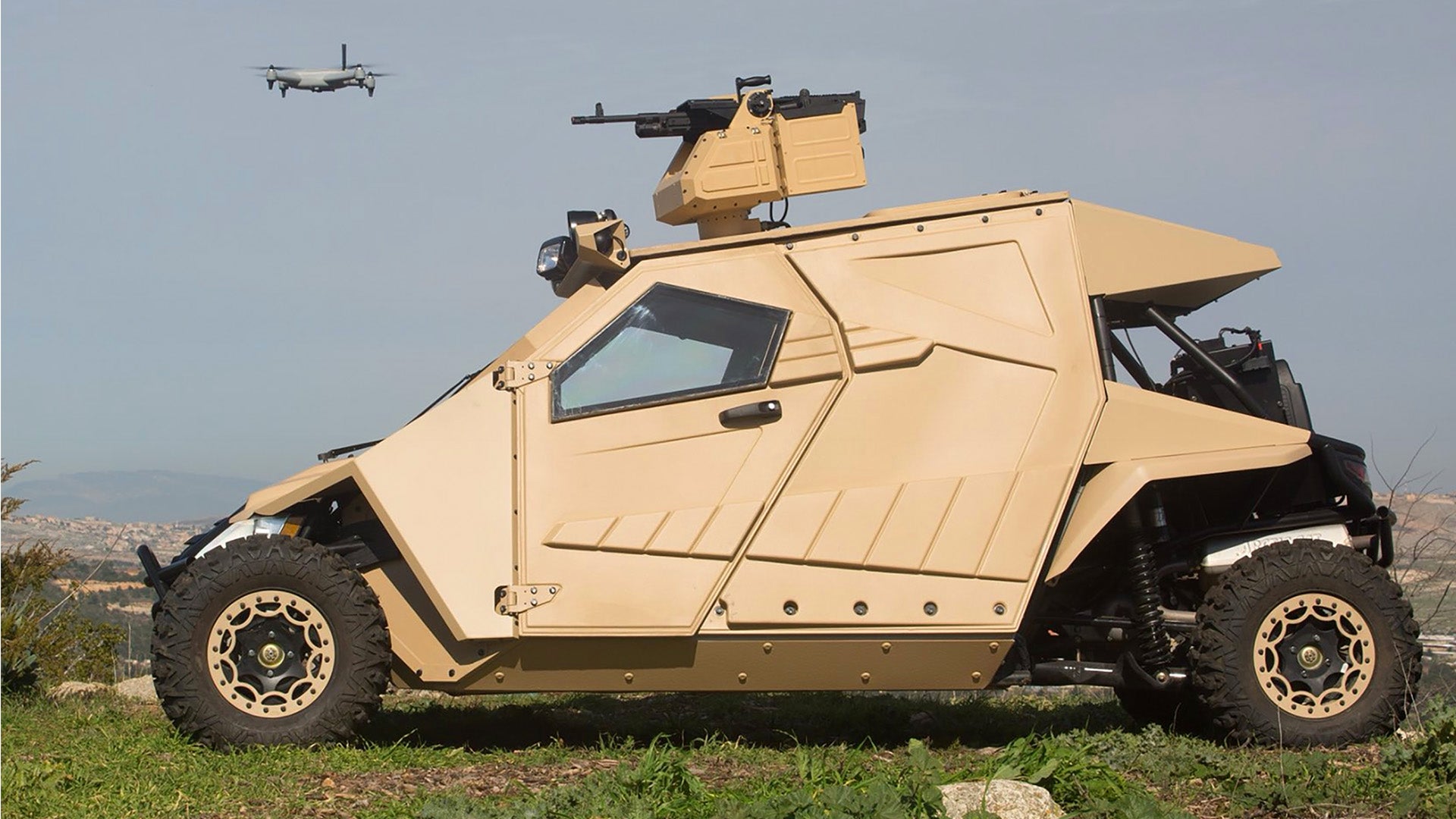Israeli firm Plasan has unveiled a new battle buggy that it says has armor that can brush off high-powered rifle bullets without any significant loss of speed or mobility. The company is pitching the design, called the Yagu, primarily for border patrol and other law enforcement duties in remote areas, but it could also offer a better protected, lightweight vehicle for certain conventional military and special operations forces.
Earlier in April 2018, Plasan
unveiled the Yagu at the Expo Seguridad 2018 exhibition in Mexico City. That the venue was in Mexico, which continues to grapple with border security and drug, human, and other trafficking challenges, helps explain the marketing focus on Yagu as a tool in combating that kind of criminality.
“Nothing this light and agile ever offered so much protection for a 3-man crew,” the company posted on Twitter after the vehicle’s debut. “Lay chase, maintain the element of surprise. Yagu is your new weapon against trafficking. Your borders will never have been so secure.”
But many of the Yagu’s other optional features point to its potential utility in military missions, as well. At its core, the buggy is a modified Arctic Cat Wildcat 4x 1000 all-terrain vehicle. It uses the same 95-horsepower engine and automatic transmission, which has the same ability to switch between two and four-wheel drive modes, as the Wildcat.

On top of that, though, Plasan, a specialized in vehicle armoring and composites, has added a new lightweight armored shell with bullet-resistant front and side windows. The company says this provides B6+ level protection on all sides for the crew of three, though an auxiliary power unit and air conditioning system are both exposed at the rear.
A European standard, B6 type armor can stop many high-powered rifle rounds, such as the NATO-standard 5.56x45mm and the ever popular Soviet-era 7.62x39mm. The “+” suggests that Plasan’s protective suite should be able to defeat more powerful cartridges, such as the NATO 7.62x51mm and the Soviet-designed 7.62x54mmR, but only if they don’t have special armor-piercing bullets.

Typically this level of protection requires ballistic steel at least a third of an inch thick, which can greatly increase a vehicle’s weight. With the composite armored box, Plasan says Yagu has a curb weight of just over 3,300 pounds, more than twice that of the standard Wildcat. But this would make it lighter than General Dynamics Flyer 72, especially with its add-on armor packages, but heavier than Polaris’ MRZR all-terrain vehicle, both of which are in service with U.S. conventional and special operations forces.
It’s not clear if that weight figure includes an optional remote weapon station or small drone launching system, which are both options that Plasan has heavily emphasized in the marketing literature. The promotional version also has flashing lights and a siren for law-enforcement duties, but could just as easily accommodate small electro-optical or infrared cameras and other sensors and missions systems for military use.

The remotely-operated weapon system on the Yagu prototype can accommodate either a 5.56x45mm Israel Weapon Industries Negev squad automatic weapon or a 7.62x51mm FN MAG-type light machine gun. It is likely that it will be able to accept other similarly sized weapons, such as the FN M249 squad automatic weapon, but does not appear suited to larger machine guns or automatic grenade launchers.
The unmanned aircraft, a small quad-copter type design, can reportedly fly for nearly 30 minutes at a time and has a full-motion video feed that it sends back to an operator inside the Yagu. A promotional video shows it operating both independently of the vehicle and physically tethered to it using a retractable cable. In this latter mode, it would function similarly to an extendable sensor mast, but without the weight and bulk necessary for that type of system.

All of these features could make Yagu a useful and low-cost option to border patrol or other law enforcement missions in austere locations where there is an increased threat of particularly well armed and organized criminals. The drone would give the crew the ability to monitor a much broader area than they might otherwise be able to do with more typical mounted or handheld optics.
But they would also appear to offer an attractive alternative for conventional military and special operations forces who are looking for the mobility and payload capacity an all-terrain vehicle might offer, but with some modicum of protection.
A report from Marine Corps Times in January 2018 said that U.S. Marine Corps special operators were particularly displeased with their MRZRs. The MRZR does offer added mobility for light forces and has a better payload capacity than smaller all-terrain vehicles and motorcycles. However, it has no ballistic protection whatsoever and therefore has limited utility for missions where there might be the risk of personnel finding themselves in a serious firefight.

“I’m sure they use it a lot in noncombat advisory roles in Africa,” an anonymous Marine told Marine Corps Times. “[But] getting a foot outside the wire in Iraq took an act of God, so tactical golf carts wouldn’t cut it.”
Later that month, The War Zone was among the first to report that U.S. Special Operations Command was urgently looking for more firepower and defenses for Flyer 72 vehicles that various special operations forces units are already using in combat zones. There are also concerns that these vehicles may not be as readily air-transportable, especially inside CH-47 and MH-47 Chinook and CH-53 Sea Stallion-type helicopters and V-22 Osprey tilt-rotors, as originally advertised.
Conventional U.S. Army airborne units are slated to get these same vehicles later in 2018, while light infantry units will start receiving them in 2019. These same units, as well as conventional Marine elements, are also exploring the expanded use of MRZR-sized all-terrain vehicles.
In March 2018, Marines experimented with Nikola Motor Company’s electric-powered Reckless 4×4 all-terrain vehicle, which is similar in size to the Arctic Cat Wildcat, during a broader test. The prototype military variant also featured a remotely operated weapon station with a 7.62x51mm machine gun, but no armor protection.

Plasan could easily pitch Yagu to the U.S. military, as well as other military and para-military organizations, as an alternative to MRZRs or similar unarmored all-terrain vehicles. Its new design could also provide a more practical option for missions requiring a more robust internally-transportable vehicle that is easier to load on and off helicopters and Ospreys than the Flyer 72. This could be even more of an issue if the added weight of new weapon mounts and armor weigh those vehicles down and make them harder to transport and less mobile over certain terrain.
Of course, Yagu still lacks the kind of protection necessary to survive against an enemy with heavy weapons, such as large-caliber machine guns and rocket-propelled grenades, and would almost certainly suffer badly at the hands of roadside bombs. Additional lightweight protective suites, such as high-tensile netting that can deflect or pre-detonate incoming anti-tank rockets, or small active protection systems, might help mitigate some of those issues, but at the cost of added weight and bulk.

It is also possible that Plasan could use the same composite armor technology it has developed for Yagu to craft other lightweight armor solutions for other existing platforms, such as the MRZR or Flyer 72. The existing armored shell concept would already seem readily adaptable to any multi-occupant all-terrain vehicle.
And above all else, the Yagu looks like it’s ripped right out of a science fiction movie, which may help with its grander appeal to tech-obsessed services. As our own Tyler Rogoway put it “it looks like the ‘Tumbler’ Batmobile from the Dark Knight movie series did it with a golf cart and this popped out nine months later.”
Considering the popularity of those films, that probably isn’t a bad thing.
Contact the author: jtrevithickpr@gmail.com
